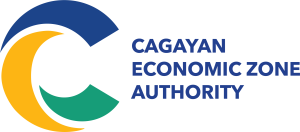CEZA revenues surge to P706-M in 2018

MANILA — The Cagayan Economic Zone Authority (CEZA) reported that it closed 2018 with a total of PHP706.5 million in revenues, representing an upward surge of 203 percent from only PHP233.1 million in 2017.
CEZA’s revenues were greatly boosted by its services income, which ballooned to PHP682.3 million in 2018, from only PHP217.5 million in the previous year.
The investment promotion agency (IPA) earns its service income through issuance of permits, licenses, processing the application for passport and visa, processing of investments, fines and penalties, and sewerage garbage fees.
It was noted that CEZA’s income from collecting permits, licenses, and processing fees rose to PHP666.3 million last year from PHP208.8 million in 2017, as a result of investors’ increased interest in CEZA.
CEZA said it received a total of USD8.1 billion or more than PHP425 billion worth of investment commitments last year.
This is after CEZA positioned the Cagayan Special Economic Zone and Freeport (CSEZF) as investment hub for financial technology (fintech) — inviting businesses in cryptocurrency and blockchain technology — as well as in the tourism and entertainment industries.
The IPA noted that it issued 25 principal licenses to fintech firms, particularly for financial technology solutions and offshore virtual currency (FTSOVC) operation.
“(CEZA) is a haven where they can design and gestate their financial technology innovations—and we are going to be partners in building the future of fintech,” said CEZA administrator and chief executive officer Raul Lambino.
“(It is) an ideal atmosphere that will inspire the best minds of the young generation and the world‘s leading cryptocurrency companies to engage in the development of the next wave of technological breakthroughs,” Lambino added.
Aside from companies that will have their FTSOVC operations in CSEZF, the agency received manifestations of interest from Mercurio Design Lab and LongRunn Capital Pte. Ltd. for a USD4.5-billion seaside city in Cagayan; Chinese firms’ USD1-billion regional research and development hub for magnetic levitation or Maglev train system, and Slovak firm’s premier health care facility, among others.
Meanwhile, CEZA’s business income — which is collected from rents, seaport system fees, other business, and interest — also grew to PHP24.2 million in 2018 from PHP15.5 million in 2017.
CEZA posted PHP295.7 million in net profit last year, which was a sharp turnaround from the PHP64.9 million loss in 2017. (PNA)
INVESTMENT OPPORTUNITIES
VISITOR COUNTER






 Users Today : 1635
Users Today : 1635 Users Yesterday : 1637
Users Yesterday : 1637 This Month : 18665
This Month : 18665 This Year : 66829
This Year : 66829 Total Users : 222714
Total Users : 222714 Views Today : 7306
Views Today : 7306 Total views : 2087488
Total views : 2087488
REPUBLIC OF THE PHILIPPINES
ABOUT GOVPH
Learn more about the Philippine government, its structure, how government works and the people behind it.



